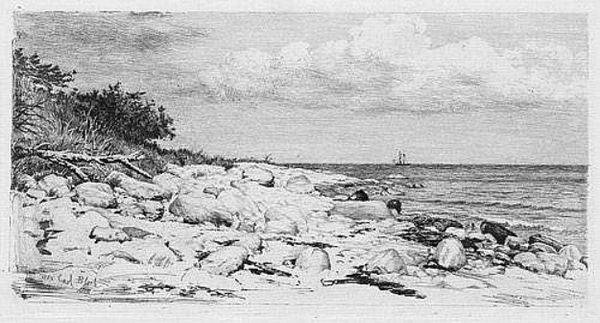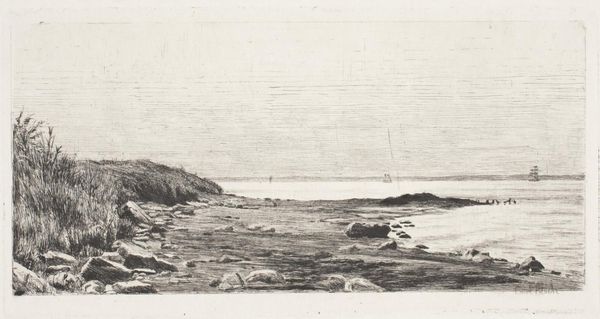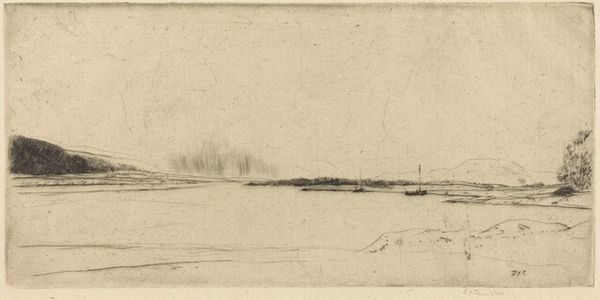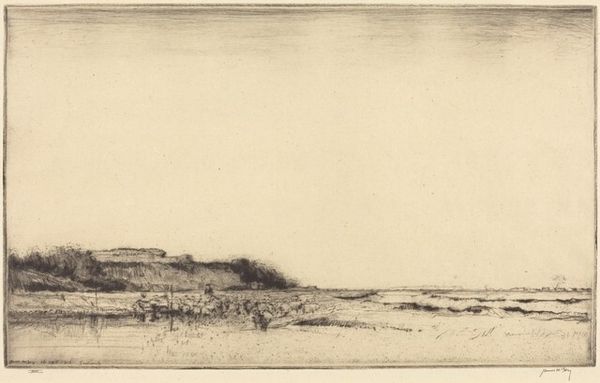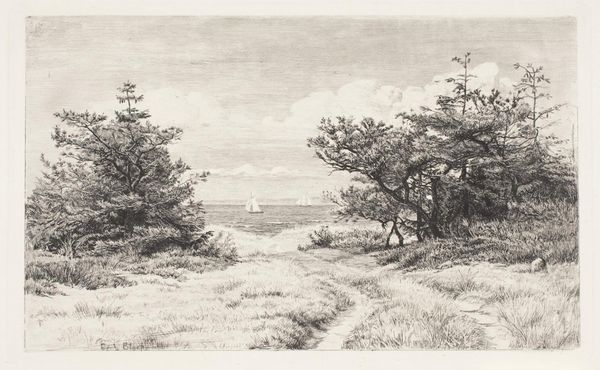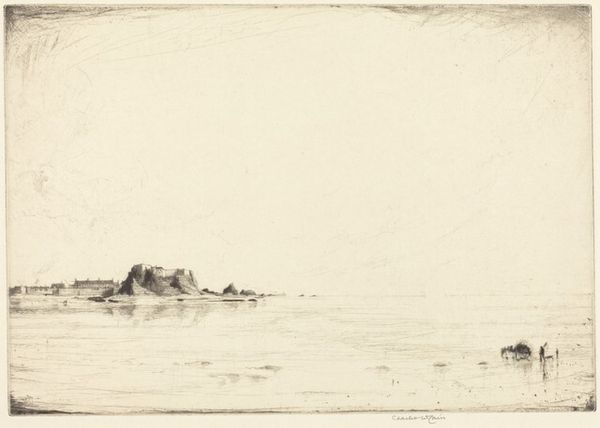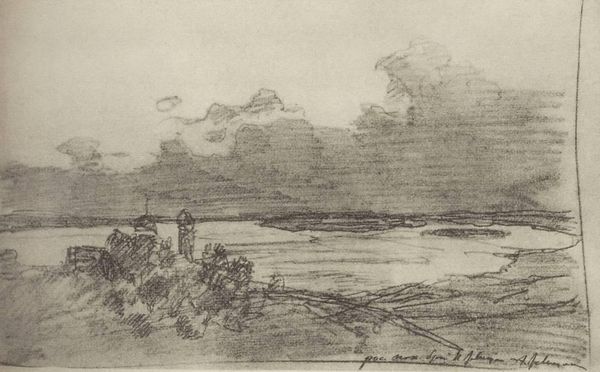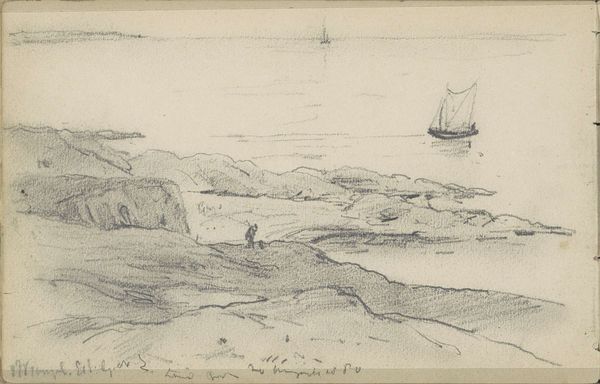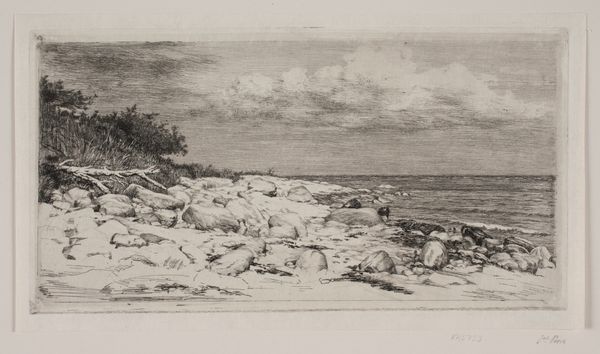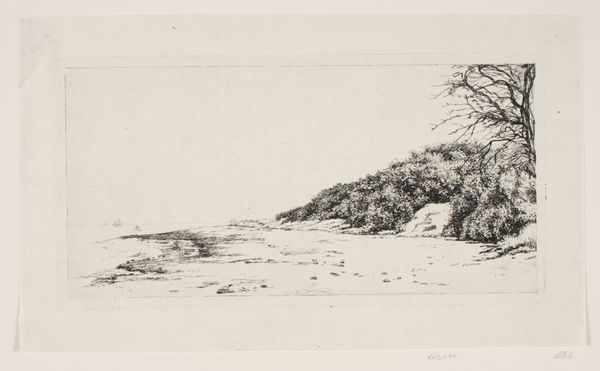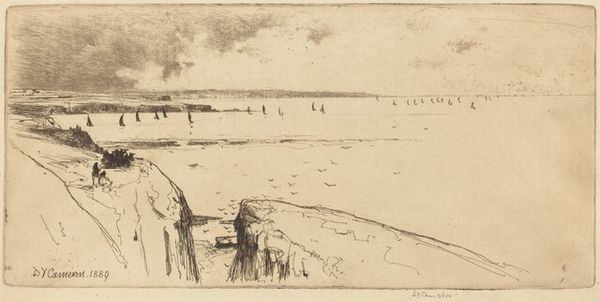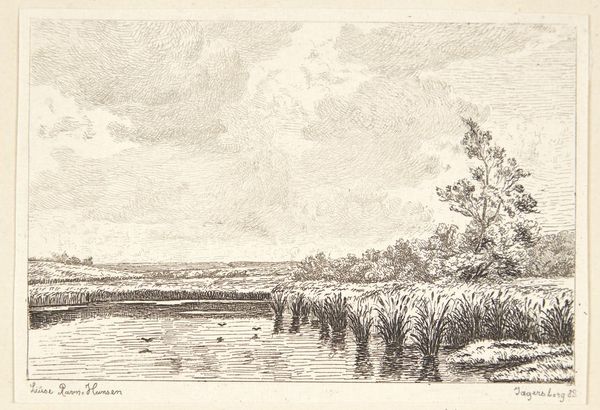
drawing, print, etching, paper, pencil
#
drawing
# print
#
etching
#
landscape
#
paper
#
pencil drawing
#
pencil
Dimensions: 316 mm (height) x 449 mm (width) (bladmaal), 144 mm (height) x 278 mm (width) (plademaal)
Editor: This is "Stenet Strandbred," a landscape etching by Carl Bloch from 1889. The scene depicts a rocky shoreline with a hazy sky and a lone ship on the horizon. It feels so serene, almost melancholic. What draws your eye when you look at this piece? Curator: I’m immediately drawn to the ship. Situated so far in the distance, yet rendered with such precise detail, it becomes a potent symbol of journeys, perhaps even aspirations beyond the tangible world of the shore. It suggests a dialogue between the known and the unknown. Do you notice the position of the clouds relative to the vessel? Editor: Now that you mention it, the clouds seem to mimic the shape of the ship's sails, echoing the theme of a voyage. They seem to amplify the ship's message. Is that something you feel would be deliberate? Curator: Bloch’s placement invites such interpretation. What do stones often signify, particularly in relation to the sea? Think of coastal communities, isolation... Editor: They could represent resilience, maybe a sense of permanence against the constant flux of the sea. It almost feels like he is highlighting our relationship with change through symbolism. Curator: Exactly! Bloch uses the stones, ship and sea to evoke a complex understanding of change. It is fascinating how he distills universal human experiences into seemingly simple images, layering them with psychological and cultural significance. Editor: That’s given me a completely new perspective. I was initially focused on the aesthetics, but now I see the layers of meaning embedded within. Curator: Precisely. Each symbol interacts with the other to evoke narratives of time and culture. Bloch gives us the gift of remembering where we have been and anticipating where we will go.
Comments
No comments
Be the first to comment and join the conversation on the ultimate creative platform.
